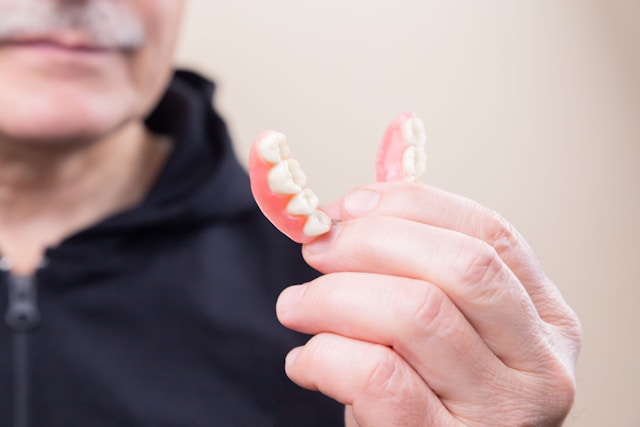In recent years, there has been a significant shift in global consciousness toward health and longevity. People are increasingly prioritizing their well-being, not just to live longer but to live better. This trend is driven by a combination of factors, including advancements in medical science, increased awareness of mental health, and a growing understanding of the importance of preventive care. The COVID-19 pandemic further accelerated this focus, as it highlighted the fragility of human health and the need for robust immune systems and mental resilience. The desire to increase one’s lifespan is no longer just about adding years to life but about adding life to those years. This means not only preventing diseases but also enhancing the quality of life through physical, mental, and emotional well-being. As we delve deeper into this topic, it becomes clear that physical therapy and mental health interventions, particularly for anxiety and depression, play a crucial role in achieving these goals.
What Role Does Physical Therapy Play in Enhancing Health and Longevity?
Physical therapy is a cornerstone of preventive and rehabilitative health care. It involves the use of exercises, manual therapy, and other techniques to improve mobility, reduce pain, and restore physical function. As people age, the risk of chronic conditions such as arthritis, osteoporosis, and cardiovascular diseases increases. Physical therapy can help mitigate these risks by improving strength, flexibility, and balance, thereby reducing the likelihood of falls and injuries.
Moreover, physical therapy is not just for those recovering from injuries or surgeries. It is also a proactive approach to maintaining health. Regular physical therapy sessions can help individuals stay active, manage chronic pain, and prevent the onset of age-related conditions. For example, exercises that focus on core strength and posture can alleviate back pain, a common issue among older adults.
Physical therapy also plays a vital role in mental health. Physical activity has been shown to release endorphins, which are natural mood lifters. Engaging in physical therapy can reduce symptoms of anxiety and depression, improve sleep quality, and boost overall mental well-being. This holistic approach to health makes physical therapy an essential component of any longevity strategy.
How Does Mental Health Impact Longevity and Quality of Life?
Mental health is inextricably linked to physical health and overall longevity. Conditions such as anxiety and depression can have profound effects on the body, leading to chronic stress, weakened immune function, and increased risk of cardiovascular diseases. The mind-body connection is well-documented, and addressing mental health is crucial for achieving a long and healthy life.
Depression, for instance, is not just a mental health issue; it is a systemic condition that affects the entire body. Chronic depression can lead to inflammation, which is a risk factor for numerous diseases, including heart disease, diabetes, and cancer. Similarly, anxiety can cause prolonged stress, leading to high blood pressure, digestive issues, and sleep disturbances.
The impact of mental health on longevity cannot be overstated. Studies have shown that individuals with untreated mental health conditions have shorter lifespans compared to those who receive appropriate care. Therefore, addressing mental health is not just about improving quality of life; it is about extending life itself.
Why Is Therapy a Better Option Than Prescription Drugs for Anxiety and Depression?
While prescription drugs can be effective in managing symptoms of anxiety and depression, they are not without drawbacks. Medications such as antidepressants and anti-anxiety (lsd) drugs often come with side effects, including weight gain, sexual dysfunction, and dependency. Moreover, these drugs typically address symptoms rather than the root causes of mental health issues.
Therapy, on the other hand, offers a more holistic and sustainable approach to managing anxiety and depression. Cognitive-behavioral therapy (CBT), for example, helps individuals identify and change negative thought patterns that contribute to their mental health issues. This form of therapy equips individuals with coping mechanisms that can be used throughout their lives, reducing the likelihood of relapse.
Another advantage of therapy is that it addresses the underlying causes of anxiety and depression. Unlike medications, which often provide temporary relief, therapy delves into the psychological, emotional, and environmental factors that contribute to mental health issues. This deeper understanding can lead to long-term improvements in mental well-being.
Furthermore, therapy is a personalized approach to mental health care. Each individual’s experience with anxiety and depression is unique, and therapy can be tailored to meet specific needs. This individualized care can lead to more effective outcomes compared to the one-size-fits-all approach of prescription drugs.
What Are the Long-Term Benefits of Therapy for Anxiety and Depression?
The long-term benefits of therapy for anxiety and depression are numerous and far-reaching. One of the most significant advantages is the development of coping skills. Therapy teaches individuals how to manage stress, regulate emotions, and navigate challenging situations. These skills are invaluable for maintaining mental health over the long term.
Another benefit is the reduction of reliance on medications. While drugs can be helpful in the short term, they are not a sustainable solution for chronic mental health issues. Therapy provides tools and strategies that can reduce or eliminate the need for medications, thereby avoiding potential side effects and dependency.
Therapy also fosters self-awareness and personal growth. Through the therapeutic process, individuals gain a deeper understanding of themselves, their emotions, and their behaviors. This self-awareness can lead to positive changes in various aspects of life, including relationships, career, and overall happiness.
Additionally, therapy can improve physical health. As mentioned earlier, mental health has a direct impact on physical health. By addressing anxiety and depression, therapy can reduce the risk of stress-related illnesses, improve immune function, and enhance overall well-being.
How Can Physical Therapy and Mental Health Interventions Work Together?
Physical therapy and mental health interventions are not mutually exclusive; in fact, they can complement each other in powerful ways. Physical therapy can improve mental health by reducing pain, increasing mobility, and promoting physical activity. Conversely, mental health interventions can enhance the effectiveness of physical therapy by addressing psychological barriers to recovery.
For example, individuals with chronic pain often experience depression and anxiety, which can hinder their progress in physical therapy. By addressing these mental health issues through therapy, individuals can become more motivated and engaged in their physical therapy sessions, leading to better outcomes.
Similarly, physical therapy can provide a sense of accomplishment and empowerment, which can boost mental well-being. Achieving physical goals, such as improved strength or mobility, can increase self-esteem and reduce symptoms of anxiety and depression.
Integrating physical therapy and mental health care can create a more holistic approach to health and longevity. This combined approach addresses both the physical and psychological aspects of well-being, leading to more comprehensive and lasting improvements.
What Are the Future Trends in Health and Longevity?
As we look to the future, several trends are likely to shape the landscape of health and longevity. One of the most significant trends is the increasing emphasis on personalized medicine. Advances in genetics and technology are enabling more tailored approaches to health care, allowing individuals to receive treatments that are specifically suited to their unique needs.
Another trend is the growing recognition of the importance of mental health. As awareness of the mind-body connection continues to grow, mental health care is becoming a more integral part of overall health care. This shift is likely to lead to more comprehensive and effective treatments for anxiety and depression.
Preventive care is also expected to play a more prominent role in the future. Rather than waiting for diseases to develop, there will be a greater focus on preventing them through lifestyle changes, regular screenings, and early interventions. Physical therapy, with its emphasis on maintaining mobility and preventing injuries, will be a key component of this preventive approach.
Finally, technology will continue to revolutionize health care. Telehealth, wearable devices, and digital health platforms are making it easier for individuals to access care, monitor their health, and make informed decisions. These innovations will empower individuals to take control of their health and longevity in ways that were not possible before.
Conclusion
The recent increase in focus on health and longevity reflects a broader shift in how we view well-being. It is no longer just about living longer; it is about living better. Physical therapy and mental health interventions, particularly for anxiety and depression, are essential components of this holistic approach to health.
Physical therapy offers numerous benefits, from improving mobility and reducing pain to enhancing mental well-being. Mental health interventions, such as therapy, provide a sustainable and personalized approach to managing anxiety and depression, offering long-term benefits that go beyond symptom relief.
By integrating physical therapy and mental health care, we can create a more comprehensive approach to health and longevity. This combined approach addresses both the physical and psychological aspects of well-being, leading to more lasting and meaningful improvements.
As we look to the future, personalized medicine, preventive care, and technological innovations will continue to shape the landscape of health and longevity. By embracing these trends and prioritizing our well-being, we can not only extend our lives but also enhance the quality of those lives.



